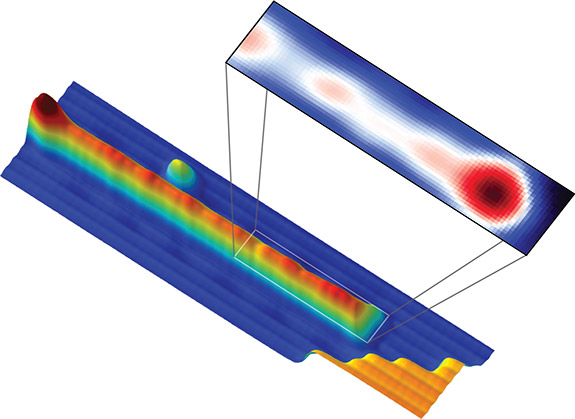Topological superconductors
are a distinct form of matter that is predicted to host boundary Majorana
fermions. These quasi-particles are the emergent condensed matter analogs of
the putative elementary spin-1/2 particles originally proposed by Ettore
Majorana in the 1930’s with the intriguing property of being their own
anti-particles. The search for Majorana quasi-particle bound states in
condensed matter systems is motivated in part by their potential use as
topological qubits to perform fault-tolerant computation aided by their
non-Abelian characteristics. We introduce a new platform for realizing
one-dimensional topological superconductors and detected their Majorana
quasi-particle edge modes with the scanning tunneling microscope. The use of
STM achieves both spatial and spectral resolution overcoming the short coming
of the previous methods of detection.
The
experimental platform consist of an array of magnetic atoms (Fe) on the surface
of strong spin-orbit superconductor (Pb). We demonstrated that magnetic atoms
are in a ferromagnetic state (using spin-polarized STM) but yet they can
support proximity superconductivity because of strong-spin interaction in Pb.
The combination of Zeeman and spin-orbit interaction is predicted to make the
superconductivity on or near this chain topological. The signature of Majorana
edge mode is resolved at the end of the chain using spectroscopic mapping with
the STM.
Reference:
Stevan Nadj-Perge, Ilya K. Drozdov, Jian Li, Hua Chen, Sangjun Jeon, Jungpil
Seo, Allan H. MacDonald, B. Andrei Bernevig, and Ali Yazdani, Science 346,
602 (2014).

(Bottom) An STM image of a
one-atom wide self-assembled Fe chain on the surface of Pb (110). (Top) High
resolution spectroscopic map at zero energy maps the probability density of the
Majorana fermion bound to the edge of the atomic chain.